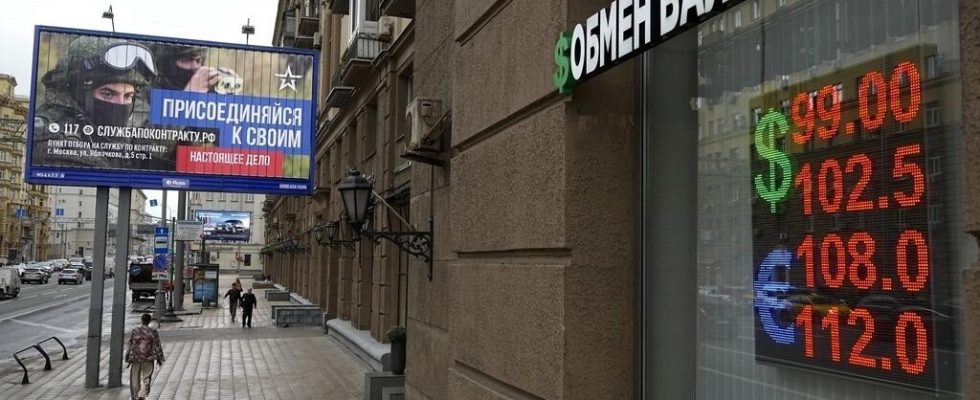The leaders of the European Union will discuss the situation in Ukraine this Wednesday, April 17. The 27 seek to unlock new means of aid for kyiv. Among the avenues that will be considered, that of the seizure of Russian assets frozen in the European Union stands out.
3 mins
How to support theUkraine ? The question arises in Brussels, while the Ukrainian army is going through a complicated period in its war with Russia. Last week, Oleksandr Syrsky, the commander-in-chief of the Kiev army, even spoke of a situation which “ considerably deteriorated ” the last days.
Unlocking new means of economic and military aid is therefore becoming increasingly urgent for Ukraine’s allies. In Brussels, European Union leaders are increasingly leaning towards seizing Russian assets frozen in their territory. A measure which would allow military aid to continue to be financed, without draining European accounts.
3 billion euros in interest per year
When we talk about “frozen Russian assets”, we must clearly distinguish between two things. First, the “frozen assets” correspond to the investments of the Russian Central Bank blocked in the EU and the G7 countries, or around 300 billion euros. At the same time, there are “frozen Russian assets”, bank accounts opened in EU banks. They are linked to Russian people or entities who are on the European sanctions list. According to Brussels, these assets would represent 21.5 billion euros.
All this money, blocked since the start of the war in European banks, however, continues to generate interest. Ursula von der Leyen, the President of the European Commission, mentioned the sum of 3 billion euros per year at the end of March. It is precisely these interests that Brussels wants to seize to allocate them to military aid and the reconstruction of Ukraine.
“ Legal details to be finalized »
In March 2024, the 27 agreed, in principle, to establish such a mechanism. Now it remains to implement it. “ Work progresses » on the question, we assure the Élysée on the eve of the summit. “There are still a number of legal details to be finalized », specifies the French presidency. Not sure, therefore, that the text will be ready for this European Council.
The seizure of frozen Russian assets also agitates leaders on the other side of the Atlantic. The subject is the subject of discussions on the sidelines of the Spring Meetings of the World Bank and the IMF in Washington. “ We hope these discussions will focus on ways to unlock the value of stranded Russian sovereign assets to support Ukraine and its long-term reconstruction », whispered to the press an official of the American Department of the Treasury.
Russia threatens “legal action”
On the American side, releasing funds quickly is becoming more and more crucial, because the aid plan for Ukraine is still blocked by Republicans in Congress. Washington therefore intends to go further than the Europeans. Earlier last week, U.S. Deputy National Security Advisor Daleep Singh was in kyiv, where he unveiled the White House’s plan to seize Russian assets. Instead of transferring interest each year, the United States believes it is possible to “ transfer 10 or 30 years of interest ” in advance. “ Added together, the value of these interests represents a very significant sum. “, declared Daleep Singh, adding that he hoped for a decision on the sidelines of the G7 summit in June in Italy.
While discussions are progressing on both sides of the Atlantic, for its part, Moscow is already reacting. After the presentation last month of the European plan to seize frozen assets, Dmitri Peskov, Kremlin spokesperson, threatened the 27 with “ lawsuits for decades “. “ Europeans must be aware of the consequences and damage » of such a decision, he added. For his part, Charles Michel, the president of the European Council, promised that the 27 would “not wouldn’t be intimidated » by Moscow.
Read alsoWhy the seizure of Russian assets frozen in the West is slow to happen
